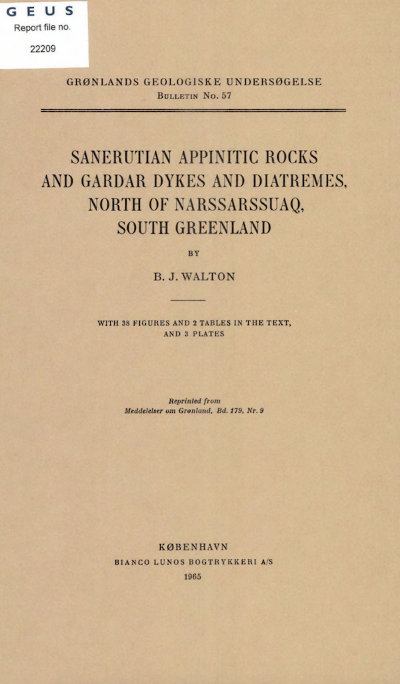Sanerutian appinitic rocks and Gardar dykes and diatremes, north of Narssarssuaq, South Greenland
DOI:
https://doi.org/10.34194/bullggu.v57.6591Abstract
Precambrian (Ketilidian) foliated granites and gneisses are intruded by Kuanitic basic dykes and large bodies of noritic gabbro, diorite and hypersthenemonzonite of Sanerutian age. The latter constitute an appinitic suite, the recognition of which is new to South Greenland. Younger granites are developed around the basic masses and from the occurrence of relict basic dykes are shown to be at least partly due to recrystallization of earlier granitic rocks, though in places the granite has been clearly mobile. It is suggested that the Sanerutian plutonic episode may represent the epeirogenic uplift phase of a root-zone of the orogeny which developed in Ketilidian time rather than the expression of a separate orogenic development as has been thought previously. The appinitic rocks are considered to belong to the normal orogenic calc-alkali suite. Hypersthene monzonite and locally syenite are thought to have developed by diffusive potassium enrichment in basic to intermediate magma. The Gardar alkali province, represented here by swarms of trachydolerites and microsyenites, together with carbonatites, is shown to occupy a characteristic post-orogenic position. Its development is related to continental disruption during the later phases of the Svecofennid chelogenic cycle. The rocks of this region are interpreted as belonging to a unified tectono-magmatic cycle.
Downloads
Published
Issue
Section
License
This article is distributed under a CC-BY 4.0 licence, permitting free redistribution and reproduction for any purpose, even commercial, provided proper citation of the original work. Author(s) retain copyright over the article contents.


